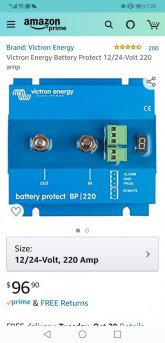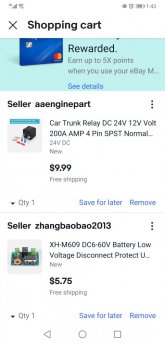Hey - no worries.
1) Run wires from the positive and negative output terminals on the low voltage disconnect board to the 85 and 86 terminals on the relay (these are the terminals that connect to the relay electromagnet, not the relay switch). It won't matter which way you wire these - you just need to create the circuit to activate the magnet and pull the switch closed.
2) Strip the lead running to your inverter remote switch and cut one of the wires (if it's an RJ11 which it looks in the photos like it might be, then there may be a couple of unused wires in there - you'll need to work out which two the active wires are - suggest some googling or trial and error)
3) Connect one end of the cut wire to terminal 30 on the relay and the other end to terminal 87.
Once the above is done, if the low voltage cutoff board cuts power to the relay, the relay switch will open and turn off the inverter.
Note you should be able to get away with a very small relay, as I don't expect there is a significant current running through the switch (if it's an RJ11 then the wires are tiny so the current can't be much). The issue with relays is that they draw a current to hold the switch closed (which will be all the time unless you have a low voltage situation). The current draw on larger relays can be significant, so you'll want to go with the smallest / lowest draw relay you can get away with. You might be able to get away with a tiny PCB relay in your case - worth having a look at.





